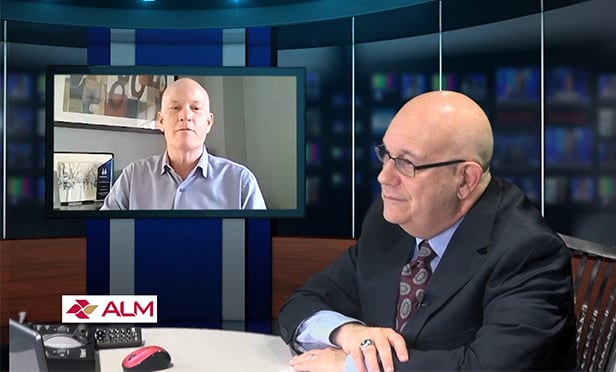NEW YORK CITY—In a radical departure to the policies under the fledgling Trump Administration in Washington, New York City Mayor Bill de Blasio proposed on Thursday new stringent measures on owners of buildings more than 25,000 square feet to reduce greenhouse gas emissions, who could face heavy fines for non-compliance.
As part of his earlier pledge to reduce greenhouse gas emissions by 80% in New York City by 2050, the proposed new rules to be debated by the City Council would require building owners to undertake upgrades to boilers, water heaters, roofs and windows on an accelerated 2030 timeframe. The measures to comply with the mandated fossil fuel caps will apply to all buildings of more than 25,000 square feet, and will trigger replacement of fossil fuel equipment and efficiency upgrades. The new mandates target the worst performing 14,500 buildings in the city, which combined produce 24% of the city's total greenhouse gas emissions.
In order to meet these targets, building owners will make improvements to boilers, heat distribution, hot water heaters, roofs and windows, requiring deeper changes during their replacement or refinancing cycles over the next 12 to 17 years.
“Time is not on our side,” says Mayor de Blasio. “New York will continue to step up and make critical changes to help protect our city and prevent the worst effects of climate change. We must shed our buildings' reliance on fossil fuels here and now. To do this, we are mandating upgrades to increase the energy efficiency of our buildings, helping us continue to honor the goals of the Paris Agreement. No matter what happens in Washington, we will not shirk our responsibility to act on climate in our own backyard.”
The fines for non-compliance could be steep, particularly for large building owners. The city states that a 30,000-square-foot residential building operating substantially above its energy target would pay $60,000 for every year over the standard, starting in 2030. A 1 million-square-foot building that operates well over its energy target would pay as much as $2 million for every year over target. Failure to comply will also affect a building's ability to receive future permits for major renovations, city officials note.
The new greenhouse reduction targets will reduce total citywide greenhouse emissions 7% by 2035, the single largest step yet taken to reduce greenhouse gas emissions. The reductions are equivalent to taking 900,000 cars off the road, and will spur 17,000 green jobs performing building retrofits, the mayor's office notes. The bill will be sponsored by Council Member Costa Constantinides.
While many city, environmental and business leaders expressed support for Mayor de Blasio's plan,Real Estate Board of New York president John Banks was cooler to the proposal, saying in a statement, “We support greenhouse gas reduction efforts to improve the environment and REBNY members are leaders on sustainability. These proposals require careful analysis, discussion and debate. The city's goals could inadvertently promote buildings that use less overall energy without regard to how the energy is used.”
He adds, “A trading floor with many terminals and employees might not meet targets, but an empty windowless building used for storage would meet the target. We all need to do what we can to make sustainable efforts affordable and achievable for all New Yorkers.”
In a published report in the Washington Post, Banks responded to the de Blasio proposal, saying, ““These proposals require careful analysis, discussion and debate. The manner in which these goals are pursued will determine whether or not the future of our city is comprised of mini-storage facilities and buildings without windows or 21st-century energy-efficient buildings that yield good jobs and affordable housing.”
REBNY's chief concern centers on their assertion that the proposal is based on a what they term a flawed metric known as Energy Use Intensity (EUI), which does not take into account occupant density and space within a building.
Another major business group was much more supportive of the mayor's proposal. Gary LaBarbera, president of the Building & Construction Trades Council of Greater New York, says, The city's greenhouse emission reduction initiative will not only help make buildings more environmentally friendly, but it also will create good middle-class construction jobs. New York City is going green and we look forward to working with the city to provide a well-trained and skilled workforce to accomplish these goals.”
The mayor's proposal does have provisions to provide assistance to small building owners to comply with the new standards. The legislation would authorize a Property Assessed Clean Energy program to provide financing at low interest rates with long terms for property owners to pay for energy efficiency investments through their property tax bill. The program has the potential to finance $100 million annually in energy efficiency and clean energy projects.
As part of his earlier pledge to reduce greenhouse gas emissions by 80% in
In order to meet these targets, building owners will make improvements to boilers, heat distribution, hot water heaters, roofs and windows, requiring deeper changes during their replacement or refinancing cycles over the next 12 to 17 years.
“Time is not on our side,” says Mayor de Blasio. “
The fines for non-compliance could be steep, particularly for large building owners. The city states that a 30,000-square-foot residential building operating substantially above its energy target would pay $60,000 for every year over the standard, starting in 2030. A 1 million-square-foot building that operates well over its energy target would pay as much as $2 million for every year over target. Failure to comply will also affect a building's ability to receive future permits for major renovations, city officials note.
The new greenhouse reduction targets will reduce total citywide greenhouse emissions 7% by 2035, the single largest step yet taken to reduce greenhouse gas emissions. The reductions are equivalent to taking 900,000 cars off the road, and will spur 17,000 green jobs performing building retrofits, the mayor's office notes. The bill will be sponsored by Council Member Costa Constantinides.
While many city, environmental and business leaders expressed support for Mayor de Blasio's plan,Real Estate Board of
He adds, “A trading floor with many terminals and employees might not meet targets, but an empty windowless building used for storage would meet the target. We all need to do what we can to make sustainable efforts affordable and achievable for all New Yorkers.”
In a published report in the
REBNY's chief concern centers on their assertion that the proposal is based on a what they term a flawed metric known as Energy Use Intensity (EUI), which does not take into account occupant density and space within a building.
Another major business group was much more supportive of the mayor's proposal. Gary LaBarbera, president of the Building & Construction Trades Council of Greater
The mayor's proposal does have provisions to provide assistance to small building owners to comply with the new standards. The legislation would authorize a Property Assessed Clean Energy program to provide financing at low interest rates with long terms for property owners to pay for energy efficiency investments through their property tax bill. The program has the potential to finance $100 million annually in energy efficiency and clean energy projects.
Want to continue reading?
Become a Free ALM Digital Reader.
Once you are an ALM Digital Member, you’ll receive:
- Breaking commercial real estate news and analysis, on-site and via our newsletters and custom alerts
- Educational webcasts, white papers, and ebooks from industry thought leaders
- Critical coverage of the property casualty insurance and financial advisory markets on our other ALM sites, PropertyCasualty360 and ThinkAdvisor
Already have an account? Sign In Now
*May exclude premium content© 2025 ALM Global, LLC, All Rights Reserved. Request academic re-use from www.copyright.com. All other uses, submit a request to [email protected]. For more information visit Asset & Logo Licensing.









